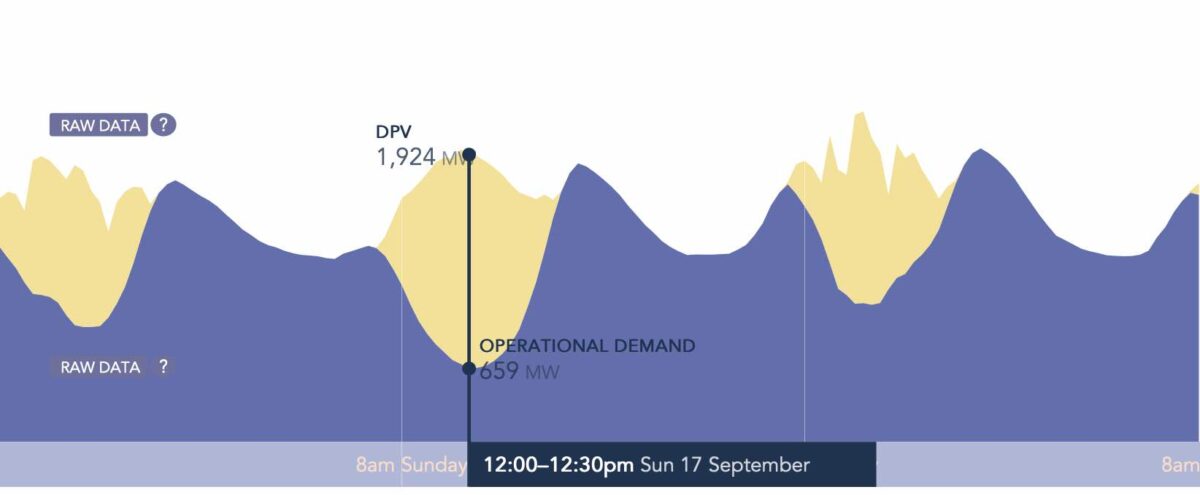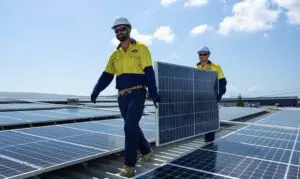Rooftop and distributed solar has set a remarkable new record for the share of generation in the world’s biggest standalone grid after peaking at nearly 2GW in West Australia’s South West Interconnected System.
The new peak of 1928 MW was set on Sunday, September 17, in the 12.30pm trading interval, according to the Australian Energy Market Operator, when it accounted for a record 74 per cent of generation in the grid, which is based around the state capital Perth and the south-west of the state.
The surge in rooftop solar also pushed “operational” demand down to 659 MW – not quite a record low but getting to the level – 600MW – where AEMO becomes nervous about its ability to have enough resources to secure the grid in the event of any major disturbance, such as the failure of a gas or coal generator, or a line trip.
The 74 per cent share of rooftop PV is remarkable because only a few years ago most energy experts would have said this was not possible on a standalone grid of this size, or on any grid for that matter.
Earlier this week, rooftop solar reached 99.5 per cent of demand in South Australia, but that grid is connected to Victoria, so can easily export any surplus production. And it has more big batteries.
It promises to be an interesting spring for the market operator and the state government. The state’s co-ordinator of energy, Jai Thomas, told RenewEconomy in the latest episode of the weekly Energy Insiders podcast that rooftop solar was expected to test new operational demand lows over the coming weeks.

The local authorities, Thomas said, have a range of options available, including increasing load, curtailing wind and solar to ensure more thermal generation, and finally switching off some rooftop solar capacity, which they can now do with the roll out of new inverter standards.
Western Australia’s main grid also has its first big battery in operation – the 100MW, 200MWh Kwinana battery – which will also be able to respond by either shifting solar from the midday peaks, or by supporting the grid if demand gets too low.
More batteries are on their way. The government on Tuesday announced China’s CATL had been awarded contracts worth more than $1 billion to supply the second 200MW, 800MWh stage of the Kwinana battery, and a new 500MW, 2000MWh near Collie.

Two other big batteries are being built that have specific contracts to time shift the output of solar from the middle of the day to the evening peaks. These are Neoen’s 219MW, four hour battery (876MWh) at Collie, and Alinta’s 100MW/200MWh battery next to the Wagerup refinery.
Ove the medium term, however, the grid authorities expect the “solar duck” issue to be solved also by the growth in electrification, at local business level, in households, with electric cars, and larger factories and refineries, and the start of green hydrogen production.
A recent demand forecast completed by the state forecasts that more than 50GW (gigawatts) of new wind, solar and storage will be needed to meet the demand forecasts from electrification over coming decades as businesses push for zero emissions power so there products can remain competitive on international markets.
See also: Energy Insiders Podcast: The end of baseload in world’s biggest standalone grid
RenewEconomy’s Big Battery Storage Map of Australia








